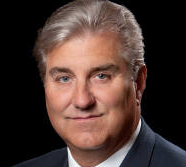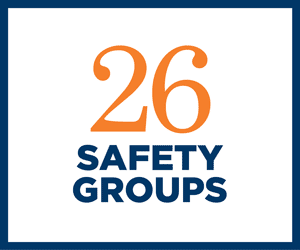Industry Insights
November 29, 2018
Wickert: Court Confirms Strength of Carrier's Subrogation Lien
- State: New York
- - 0 shares
Subrogation professionals are duty-bound to maximize a workers’ compensation subrogation recovery for a WC carrier and its insured employer, which is eager to maintain a favorable experience rating.

Gary L. Wickert
They dream about claims in which they demand 100% of a policy limits third-party recovery, not because they wish the employee ill will, but because they have the responsibility to maximize subrogation recoveries in general.
A recent New York Supreme Court case fulfilled one such subrogation professional’s dream, despite threats of bad faith for not compromising the lien. The court confirmed the right to insist on the full third-party recovery under New York law.
It should serve as a rallying cry for workers’ compensation claims professionals across the country and as a poster child for reforming the law in a few states that have become hostile to the tremendous social and economic benefits of subrogation.
In Estevez v. Public Defender Trust, Estevez was injured on the job when a vehicle owned by Public Defender Trust backed into him while he was pushing a hand truck in New York City. Coincidentally, Liberty Mutual was both the workers’ compensation carrier for Estevez, and the liability carrier for the defendant. It paid $898,881.47 in benefits.
Estevez hired an attorney, who sued the defendant, revealing only $250,000 in liability policy limits. The plaintiff’s counsel asked Liberty Mutual to compromise its lien, but it offered to waive only $10,000 so that the employee would “recover something” from the settlement. Estevez filed a motion urging the court to find both that this was bad faith and that the made whole doctrine should apply, requiring the carrier to intervene and protect its right of subrogation.
New York’s court system is confusing because it is nominally different than the court systems of most other states. Generally, a New York statewide trial court is referred to as a "supreme court." The Supreme Court is a trial court of unlimited jurisdiction, but it generally hears only cases that are outside the jurisdiction of other trial courts with more limited jurisdiction.
In issuing its ruling, the Supreme Court began by reminding us that a workers’ compensation carrier that pays compensation benefits is entitled to a lien against any net recovery from the third-party action for all sums it has paid to the employee. Therefore, Liberty Mutual’s lien for benefits paid to Estevez attaches to any recovery in the third-party action.
The carrier’s lien against the “net recovery” by the plaintiff, which is determined by deducting all reasonable and necessary expenditures, including attorneys’ fees incurred, from the third-party recovery. If the carrier is responsible for obtaining the recovery, the proceeds are used to repay both the past and future workers’ compensation obligations, and two-thirds of any excess belongs to the claimant after deducting expenses.
Section 29(1) specifically provides the carrier with a lien on the proceeds of any recovery from the third party, whether by judgment, settlement or otherwise, after the deduction of the reasonable and necessary expenditures, including attorney’s fees incurred in getting the recovery.
The amount of the lien is “the extent of the total amount of compensation awarded under or provided.” The court said it was noteworthy that while the statute specifically creates a procedure allowing a court to apportion the reasonable and necessary expenditures, including attorneys’ fees incurred in effecting such recovery, it does not make provision for the court to apportion the carrier’s lien between that which is reasonable and that which is unreasonable.
Rather, the statute appears to contemplate that the carrier’s entitlement to its lien is on all sums paid, as against the entire amount of the recovery. It is a “super lien.”
This “super lien” has been characterized by the New York Court of Appeals as “inviolable against any recovery by a compensation claimant.” The irreducible nature of the lien is further illustrated by a case in which the court discussed the priority of the various claims being made against the proceeds of a settlement obtained by the petitioner in connection with a work-related injury.
In Daniels v. Monroe County Child Support Collection Unit, the workers’ compensation lien took priority even over the Monroe County Child Support Collection Unit’s claim for unpaid child support.
The Supreme Court denied Estevez’ motion, holding that the refusal of Liberty Mutual to reasonably compromise its lien did not constitute bad faith. Once and for all, New York confirmed that the rules and limitations applicable to equitable subrogation did not apply to the statutory lien held by a subrogated workers’ compensation carrier under §29.
It became readily apparent in the Estevez case that the interloper was actually plaintiff’s counsel. Were it not for him, the employee would have recovered some amount, and the carrier would have received the remainder as statutory reimbursement of its lien.
Interestingly, there was no anti-subrogation argument brought up by plaintiff’s counsel. The Anti-Subrogation Rule (“ASR”) is a common-law rule stating that a subrogated insurance company standing in the shoes of its insured cannot bring a subrogation action against or sue its own insured. Sometimes known as the “suing your own insured” defense, the ASR was originally developed based on the logical premise that because the carrier stands in the shoes of its insured, it would essentially be suing itself.
Therefore, no right of subrogation can arise in favor of an insurance company against its own insured. The argument that wasn’t made was that Liberty Mutual (as subrogated workers’ compensation carrier) was subrogating against its own insured under the Liberty Mutual liability policy.
The reason for this may be that counsel simply didn’t think of it, or that it wasn’t raised because it likely wouldn’t apply in New York, where the insurer is not seeking subrogation against its own insured for a claim arising from the very same risk for which the insured was covered.
The Estevez ruling should embolden workers’ compensation carriers and claims handlers who are intimidated into accepting less than what they would otherwise be entitled. It isn’t bad faith — it’s just good subrogation practice.
Gary Wickert is a partner with the Matthiesen, Wickert & Lehrer law firm in Hartford, Wisconsin. This blog post is reprinted with permission.
Advertisements
Columns
- Moore: Reciprocity Adds Authority 04/23/24
- Montgomery: Sedgwick Tries PPO Discount for Med-Legal (Again) 04/19/24
- Kamin: More Policy Exclusions Would Reduce Losses 04/18/24
- Phillips: It's All Settled 04/17/24
- Snyder: Public Benefit Rules Have Changed, but It Might Not Make a Difference 04/12/24
- Headrick: Clearing Up a Common Misconception 04/11/24
- Snyder: Litigation Guidelines Should Define Four Settlement Triggers 04/10/24
- Kirsch: Depositions of Comp Carrier Employees After Intervening in Third-Party Actions 04/09/24
- Wilson and Bennett: Could AI Have Prevented the Opioid Crisis in Workers' Comp? 04/08/24
- Moore: Pandemic Effect Over in March 2027. Really? 04/05/24
- Geaney: A Brief History of Our State's Workers' Compensation Act 04/04/24
- Kamin and Larres: Significant Panel Decision Clarifies Recon Confusion 04/03/24
- Gelman: Exposed to 'Forever Chemicals' 04/02/24
- Montgomery: Cyberattack Delays Payment of San Francisco Bills 04/01/24
- Young: Indoor Heat Regs in Turmoil 03/29/24
- Langham: Shootings and Compensability 03/27/24
- Geaney: Third-Party Liens Not Always Due Right Away 03/26/24
- Larres: State Supreme Court Denies Review of Our Appellate Win 03/25/24
- Moore: Recordkeeping and Your Remote Premium Auditor 03/22/24
- Switzer: Important Change Coming Soon 03/21/24
Now Trending
- Workers' Compensation News
-
Calif.
Chiropractor Sentenced to More Than
54 Years, Fined…
Posted on Apr 16, 2024
-
Calif. Court
Upholds Summary Dismissal of
Worker's Claims for Retaliation,…
Posted on Apr 17, 2024
-
Calif. WCIRB
Approves Recommendation for 0.9%
Rate…
Posted on Apr 18, 2024
-
Calif. Committee
Passes Bill to Expand 4850…
Posted on Apr 22, 2024
-
Calif. Committee
Passes Bill to Revise Poster…
Posted on Apr 19, 2024
-
Calif. Cal/OSHA
Cites Construction Company $371,100
for Fatal Trench…
Posted on Apr 22, 2024
-
Calif.
Appropriations Committee Schedules
Hearing on E-Signature…
Posted on Apr 22, 2024
-
Neb. Divided
Supreme Court Reinstates
Occupational Disease Claim for…
Posted on Apr 23, 2024
-
Minn. Supreme
Court Upholds Award to Social
Worker for…
Posted on Apr 19, 2024
-
Ark. Worker Not
Entitled to Additional Benefits
After Date of…
Posted on Apr 22, 2024
Jobs
Upcoming Events
May 5-8, 2024
Risk World
Amplify Your Impact There’s no limit to what you can achieve when you join the global risk managem …
May 13-15, 2024
NCCI's Annual Insights Symposi
Join us May 13–15, 2024, for NCCI's Annual Insights Symposium (AIS) 2024, the industry’s premier e …
May 13-14, 2024
CSIA Announces the 2024 Annual
The Board of Managers is excited to announce that the CSIA 2024 Annual Meeting and Educational Con …
Social Media Links
c/o Business Insurance Holdings, Inc.
Greenwich, CT 06836





No Comments
Log in to post a comment